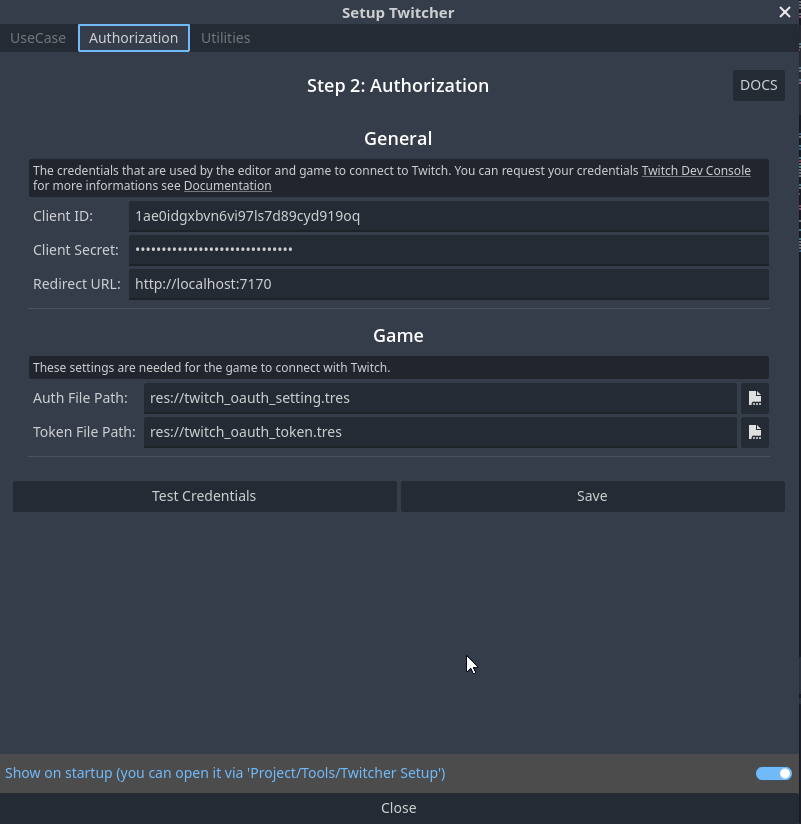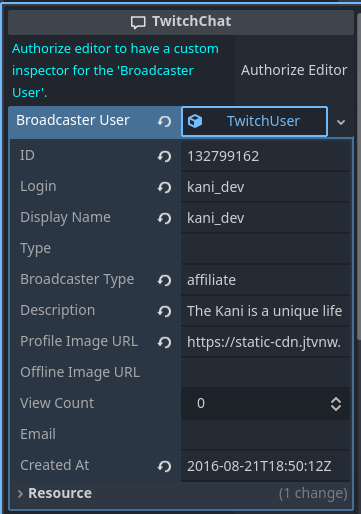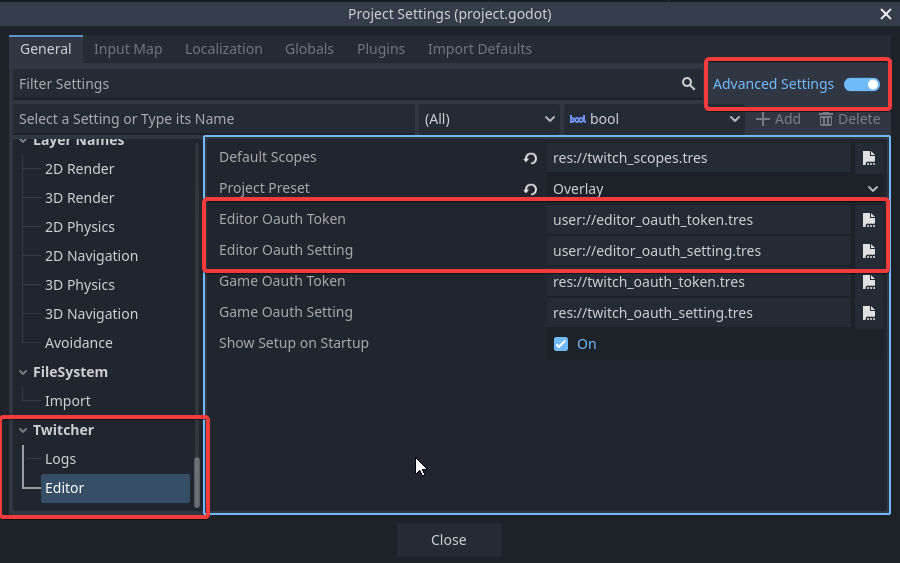Editor Authorization
Certain Twitcher features enhance the Godot editor experience, such as custom inspectors for resources (like TwitchUser) or tools that fetch data directly from Twitch to aid development. To function correctly, these features often need to interact with the Twitch API, requiring the editor itself to be authorized.
This editor authorization is separate from the authentication flow your end-users will experience in your final game. It generates a token used only by the Godot editor instance.
There are a few ways to authorize the editor:
1. During Initial Setup (via Test Credentials)
The most common way to authorize the editor is during the initial configuration of your Twitch application credentials:
- As part of the Initial Setup or when configuring your
OAuthSettingresource manually, you will find aTest Credentialsbutton. (Caption: Test Credentials button in OAuthSetting)
(Caption: Test Credentials button in OAuthSetting) - Clicking this button performs two actions:
- It validates your Client ID and Client Secret.
- It initiates the OAuth authorization flow specifically for the Godot editor. Follow the browser prompts to grant access.
- Upon success, a token is generated and stored internally for the editor's use.
2. Via TwitchUser Inspector
If you haven't authorized the editor via the initial setup, or if the editor's token expires, you can re-authorize when working with TwitchUser resources:
- Create or assign a
TwitchUserresource to an exported variable in one of your scripts:gdscript# Example script variable @export var user: TwitchUser - Select the node with this script in the Scene dock.
- In the Inspector, find the
userproperty. If the editor is not authorized, you will likely see anAuthorize Editorbutton directly within the inspector for theTwitchUserresource. (Caption: Authorize Editor button in TwitchUser inspector)
(Caption: Authorize Editor button in TwitchUser inspector) - Clicking this button triggers the same editor-specific OAuth authorization flow.
(Optional) Specify a Custom Editor Token
By default, Twitcher manages the editor's authorization token internally. However, if you need more control or want the editor to use a specific pre-existing token, you can configure this:
- Navigate to Project -> Project Settings -> Twitcher -> Editor.
- Locate the
Editor Tokensetting. (Caption: Editor Token setting in Project Settings)
(Caption: Editor Token setting in Project Settings) - Assign an existing
OAuthTokenresource file to this setting. The editor will now use this specific token for its API calls.
Regarding Scopes:
It's important to note that while the editor does require an OAuth token to make API calls, this editor-specific token does not need specific user scopes (like chat:read or channel:read:subscriptions). The editor features interact only with publicly accessible Twitch API endpoints that don't require granular user permissions for the data they retrieve.